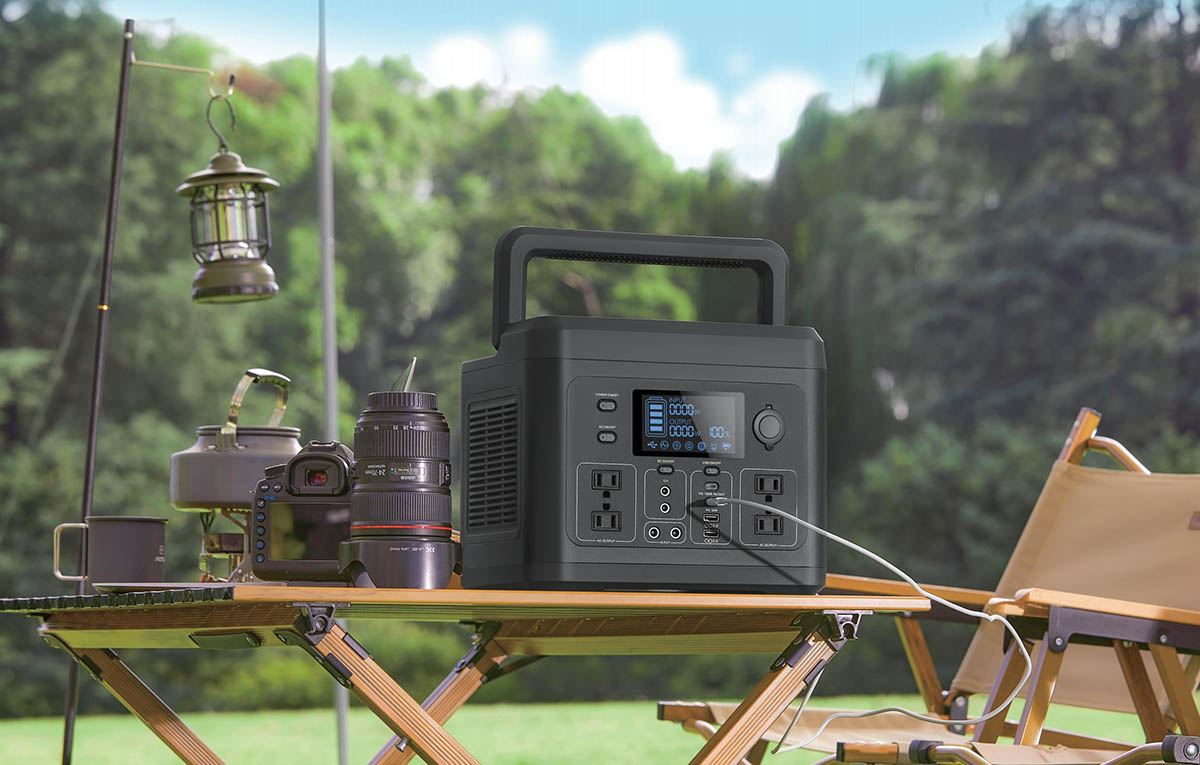Whether browsing online marketplaces or exploring industry exhibitions, you'll notice an increasing number of companies offering outdoor power sources. These products vary in appearance, interfaces, power, and capacity, making it daunting for first-time users to select a safe and reliable option that suits their needs.
1. Understand Key Performance Factors
Let's delve into the crucial components of outdoor power sources, as they greatly influence product performance and reliability:
Battery Cells: The selection and grouping of battery cells determine the discharge performance, cycle life, and safety of outdoor power sources. Currently, two main types of battery cells are used: lithium-ion and lithium iron phosphate. While lithium-ion cells excel in energy density and temperature performance, lithium iron phosphate offers better cycle life, safety, and cost-effectiveness. For small to medium capacities, lithium-ion cells are commonly preferred for their portability and charging efficiency, whereas larger capacity products often utilize lithium iron phosphate cells for enhanced safety and overall performance.
Battery Management System (BMS): The BMS is a software and hardware system crucial for maintaining accurate state of charge (SOC), implementing safety control logic, and ensuring reliable operation over extended periods and multiple cycles. The effectiveness of the algorithm directly impacts user experience.
Inverter System: Key parameters of the inverter system include output waveform, AC output power, and conversion efficiency. While most claim to produce pure sine wave output, the quality may vary. High peak power facilitates the startup of inductive loads, which typically have high startup surge currents. The conversion efficiency of the inverter system should be at least 85%, with premium products achieving up to 95%, resulting in reduced heat generation and enhanced efficiency.
Heat Dissipation System: Responsible for dissipating heat from the inverter system and batteries, the heat dissipation system typically activates when internal temperatures exceed safe thresholds. Noise control and achieving thermal equilibrium are critical aspects of the design, ensuring continuous operation within permissible environmental temperatures.
2. Assess Your Specific Requirements
Understanding both the product and your own needs is essential for selecting the most suitable option:
Consider Usage Scenarios: While outdoor power sources are versatile, categorizing them based on usage scenarios aids in selection. Different scenarios entail varying equipment requirements and usage durations. Below are summarized typical application scenarios and associated equipment:
Entertainment/Mobile Office: Smartphones, drones, laptops.
Outdoor/Power Outage Emergency: Car refrigerators, mini rice cookers, portable projectors.
Professional/Disaster Emergency: Power tools, recreational vehicles, household appliances.
Evaluate Electric Device Characteristics: Assess factors such as size, weight, portability, frequency of use, and battery capacity of the devices you intend to power. This information guides the selection of the appropriate capacity and power rating:
Recommended Capacity/Power:
Less than 500Wh/500W for lightweight and portable usage.
Less than 1000Wh/1000W for comprehensive applications.
Greater than 1500Wh/1500W for high-power and extended usage scenarios.
Review Product Specifications: Pay close attention to parameters such as rated power and load type compatibility. Ensure that the rated power of your devices does not exceed that of the outdoor power source, and be mindful of load types—particularly inductive loads, which may require up to three to seven times the startup current compared to their operating current.
Consider Budget: Prices generally correlate with capacity/power, with larger capacities commanding higher prices. Adjust your capacity/power requirements based on your budgetary constraints.
By understanding these factors and conducting thorough research, you can confidently select an outdoor power source that meets your needs and ensures a reliable power supply for your outdoor adventures or emergency situations.
If you're interested in learning more about our solar energy storage offerings, we encourage you to explore our product line. We offer a range of panels and battery that are designed for various applications and budgets, so you're sure to find the right solution for your needs.
Website:www.fgreenpv.com
Email:Info@fgreenpv.com
WhatsApp:+86 17311228539
Post time: Jan-28-2024












